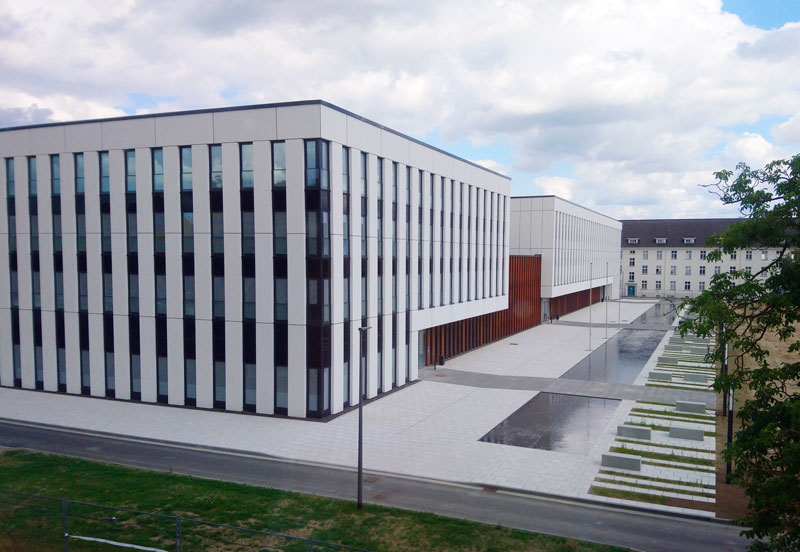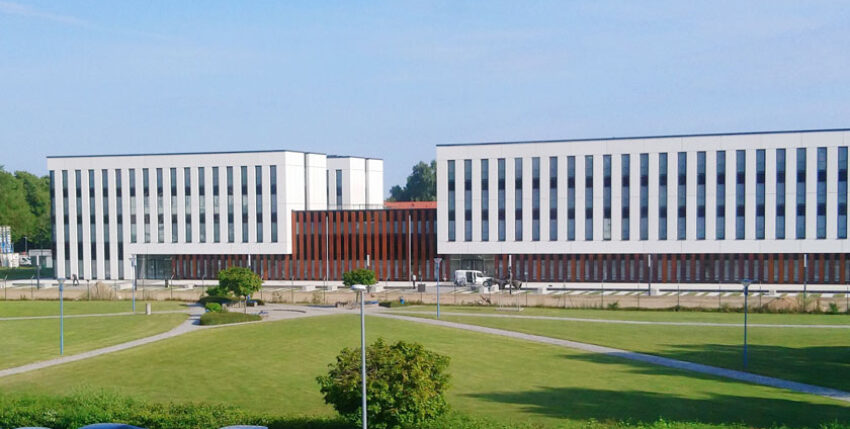On Thursday, 28 October 2021, the German Navy will take over the new construction of the future naval command centre (FüZ M) at the Hanse Barracks in Rostock. The new multifunctional building on Kopernikusstraße will house the most important levels of naval command.
Construction of the new building, which offers space for around 460 people, began in April 2017. The new building, measuring around 120 m x 35 m, has a gross floor area of approx. 13,600 m².
In principle, the building consists of three separate parts, which will house the following elements:
The military maritime command staff called "German Maritime Forces Staff", or in NATO abbreviation DEU MARFOR, is set up for the planning, support and operational command of manoeuvres and exercises. In times of crisis, NATO or the EU, for example, can activate the staff as a maritime headquarters to command multinational naval units. DEU MARFOR is therefore a further contribution by Germany to the defence of the alliance.
The "Maritime Operations Centre", or MOC for short, will also have a new home in the building. The MOC, which is still located in Glücksburg on the site of the former naval command centre (until 2012), ensures the command of the fleet during basic operations, exercises, mission preparation and missions. However, the move to the new building is still pending, as the installation of the command and communication technology has not yet been completed. The outdated infrastructure in Glücksburg - Meierwik will have to be used for this long. However, it is not expected that command and control capabilities will be impaired during the transition.
The third pillar of the command centre is the Fleet Entry Point (FEP) in the four-storey complex. This serves as technical management support to ensure communication with the fleet. The purpose of bringing together the capabilities of management, organisation and technology in a single building is to unite them under one roof. While the construction itself proceeded swiftly and according to plan, the integration of the necessary command and communication technology was subject to considerable delays from the outset. As these have to meet NATO standards as well as the requirements of a uniform command and control system for the German Armed Forces, the Navy is currently still having to improvise. The future is called the German Mission Network (GMN), which is to be compatible with NATO's Federated Mission Network (FMN). It has not yet been officially announced when the measures will be finalised.









